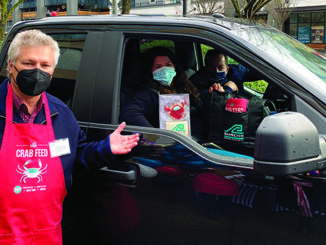
By / Kathleen Collins, SMACNA Legislative Consultant
The two words sum up 2020 thus far—unprecedented and unpredictable. The 2021 legislative session looks like it will also be unpredictable for both the issues and process. The major task for the Legislature in the 2021 session is to prepare new two-year general fund and transportation budgets. They will be doing so on a continuing economic roller coaster.
When the 2020 session came to a close in March, the Legislature was just beginning to address the pandemic. In the closing hours they appropriated $200 million for COVID expenses. That amount now pales in contrast to needs of businesses, citizens and, of course, the local and state governments. By April, the state’s revenues started dropping dramatically as the pandemic curtailed economic activity across Washington.
The scope of the problem
The forecast last spring projected a $9 billion shortfall—$4 billion for the second year of the current biennium and a $5 billion shortfall for the next two-year state budget. The news improved some this fall because federal stimulus payments drove more consumer spending and some sectors of the economy were able to re-open. Construction activity has improved but is still below pre-pandemic levels.
What does the future look like? The September forecast projected more revenue but was still down about $4 billion for the rest of this biennium and next. The state forecasters emphasized that the economic situation is volatile with the two big unknowns—future pandemic impacts and Boeing’s business activity. The state has about $3 billion in reserves, and legislators and the Governor are hoping for more federal assistance. Over half of the $2 billion in federal COVID aid received in March has been spent so far.
Are we looking at more taxes?
Probably or at least attempts to raise taxes. The Democrats control both houses and the Governor’s Office. Many of the Democrat legislators have declared that new taxes will be necessary because they do not think they should cut that much out of the budget to make up for the deficit. Republicans say this is not the time to impose more burdens on businesses and that the emphasis should be on budget cuts, in particular newly authorized spending. State agencies have submitted possible cuts to their budgets, but many have also asked for money for new programs.
What kind of taxes have been suggested? The two most frequently mentioned ones are a state capital gains tax and a state-wide or Puget Sound area-only employment tax on high wage earners. Seattle recently adopted a high wage earner tax for employees who work in Seattle or live in Seattle. Hopefully a state-imposed employment tax would not be in addition to Seattle’s tax. SMACNA has opposed the capital gains tax and the high wage employee tax.
The other tax that is in play is some kind of tax on carbon emissions. This would be either a straight tax on carbon emissions from petroleum use and other fossil fuel uses or a cap and trade system. The cap and trade system would generate money for the state through the sale of carbon allowances but does not provide immediate relief because it would take time to put it in place. It is worth noting that the voters have rejected a carbon tax twice at the ballot. But unlike previous years when carbon revenue bills were attempted, more interest groups are willing to consider such a tax if it is imposed on transportation and used for transportation purposes. SMACNA contractors would see increased costs for gasoline from a carbon type tax.
Other issues potentially in play
Unprecedented unemployment has eroded the state’s unemployment compensation fund. This fund is entirely paid by employer taxes. The formula for the rate is generally—the higher a business’ use, the higher the tax rate. In addition, there are two safety net taxes, a social tax and a solvency tax. These are triggered when the fund needs to be stabilized. The state should have enough money left in the state fund to avoid insolvency in 2020, but it will need to replenish the fund. Under the current formula this will mean higher tax rates for all employers. One estimate is as much as a 500% increase for many. The Legislature might consider adjusting the current formula or adding money to the fund to alleviate the large increases. A new infusion of federal money could be used to lessen the impact on businesses. This is an issue SMACNA will watch closely as the changes would impact construction.
The Construction Project Advisory Review Board (CPARB) is a board comprised of construction companies, public owners, and labor. They were set up to review GC/CM and design build projects and have evolved into a policy review committee for both legislative and administrative construction proposals. CPARB is due to expire and needs to be reauthorized. The reauthorization bill will include several other agreed upon changes to the construction statutes.
How will session be conducted?
The House and Senate are planning to change the way they do business during the 2021 session to protect the members and staff as well as the public from COVID exposure. At this point in time, the House is planning on doing most of its business virtually. The Senate is still discussing options but is leaning in that direction, as well.
It is almost certain that committee hearings will be conducted virtually. All legislative buildings will be off limits to the public, including lobbyists, so in-person meetings will have to take place outside or off campus. The legislators who have to come from a distance or have poor internet access are likely to come to Olympia and operate from their offices. Others will work from their homes or businesses. It is unclear how floor activity will occur, but the House is looking at a virtual model for voting on bills as well.
SMACNA will be sending out updates on legislative issues. We may need you to respond individually to your legislator on a specific issue. Hopefully the economy stabilizes and the Legislature makes wise decisions on both issues and budgets. ▪


